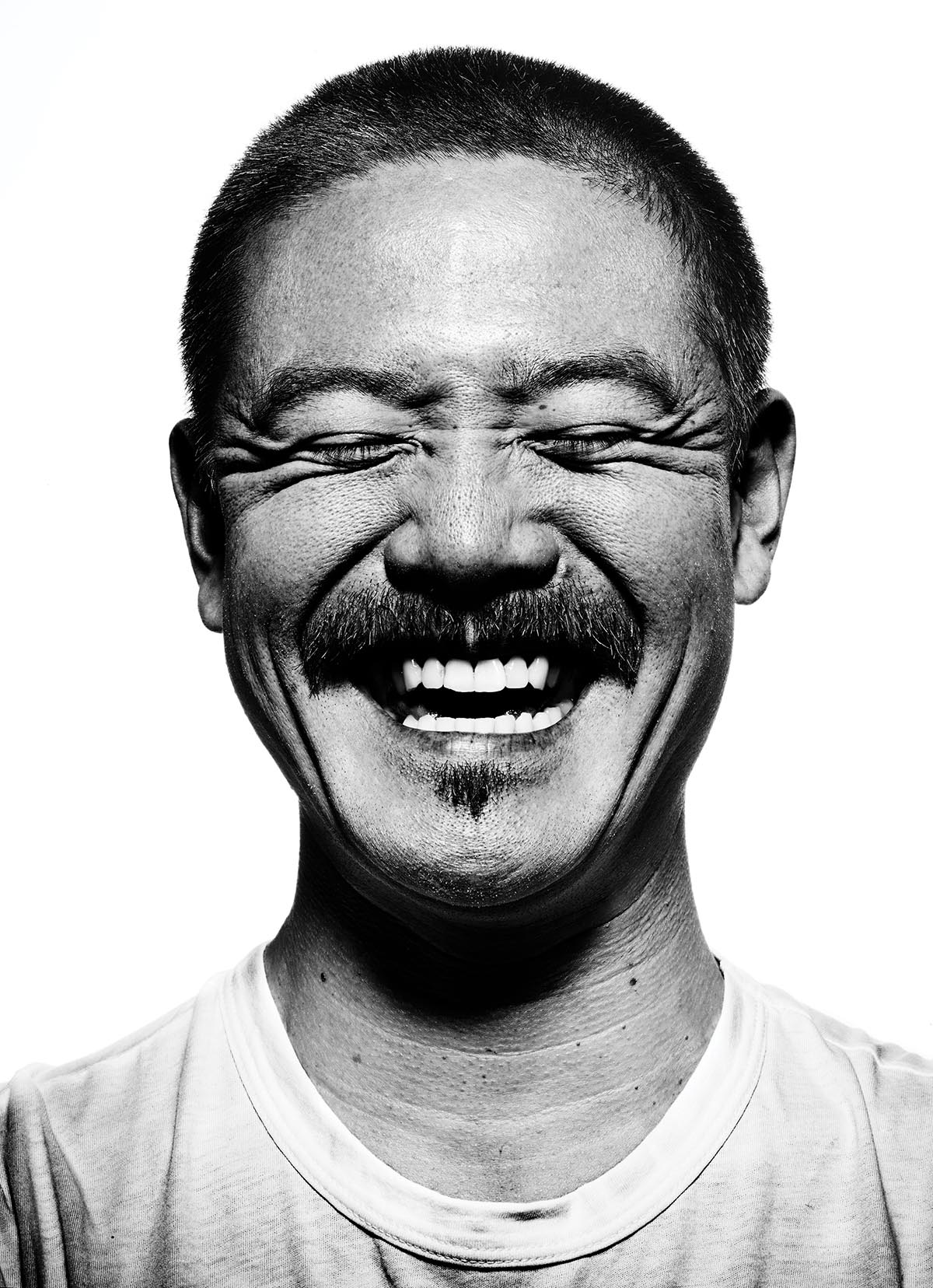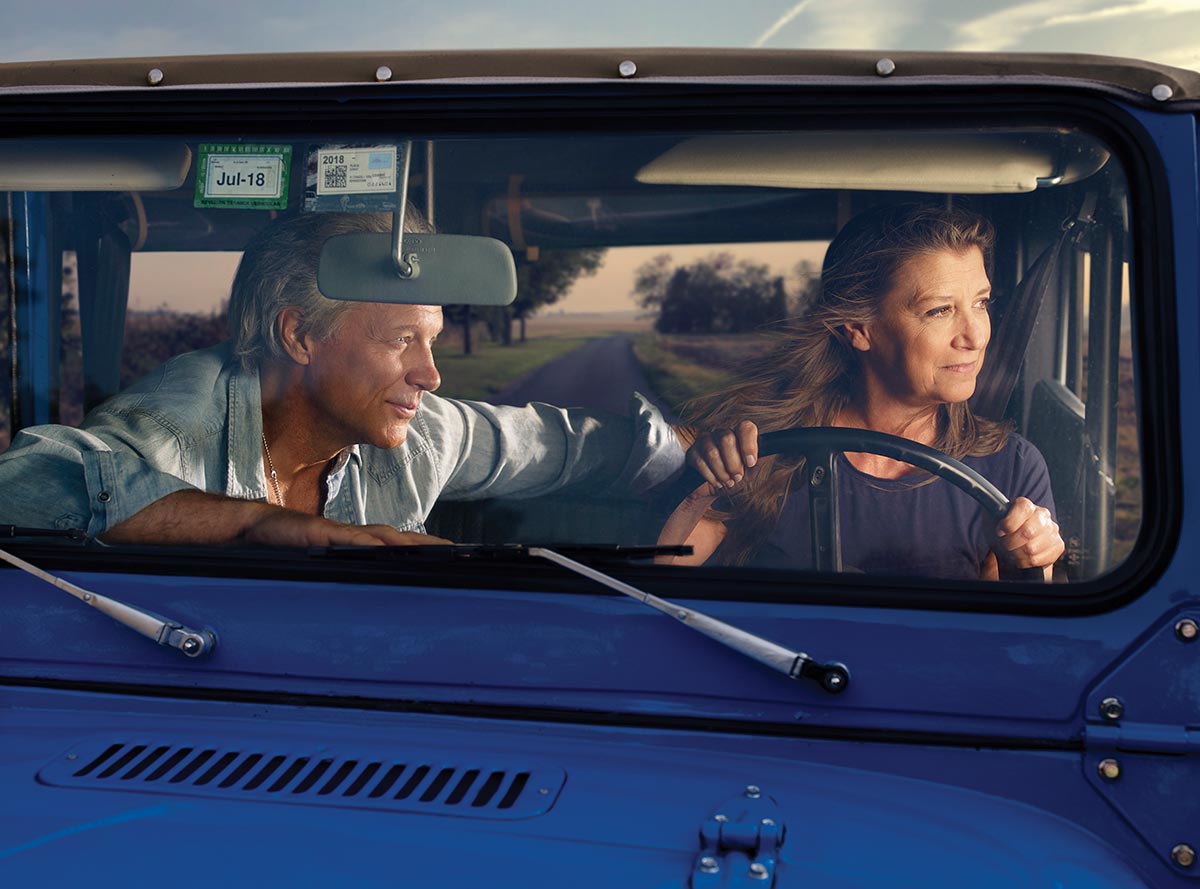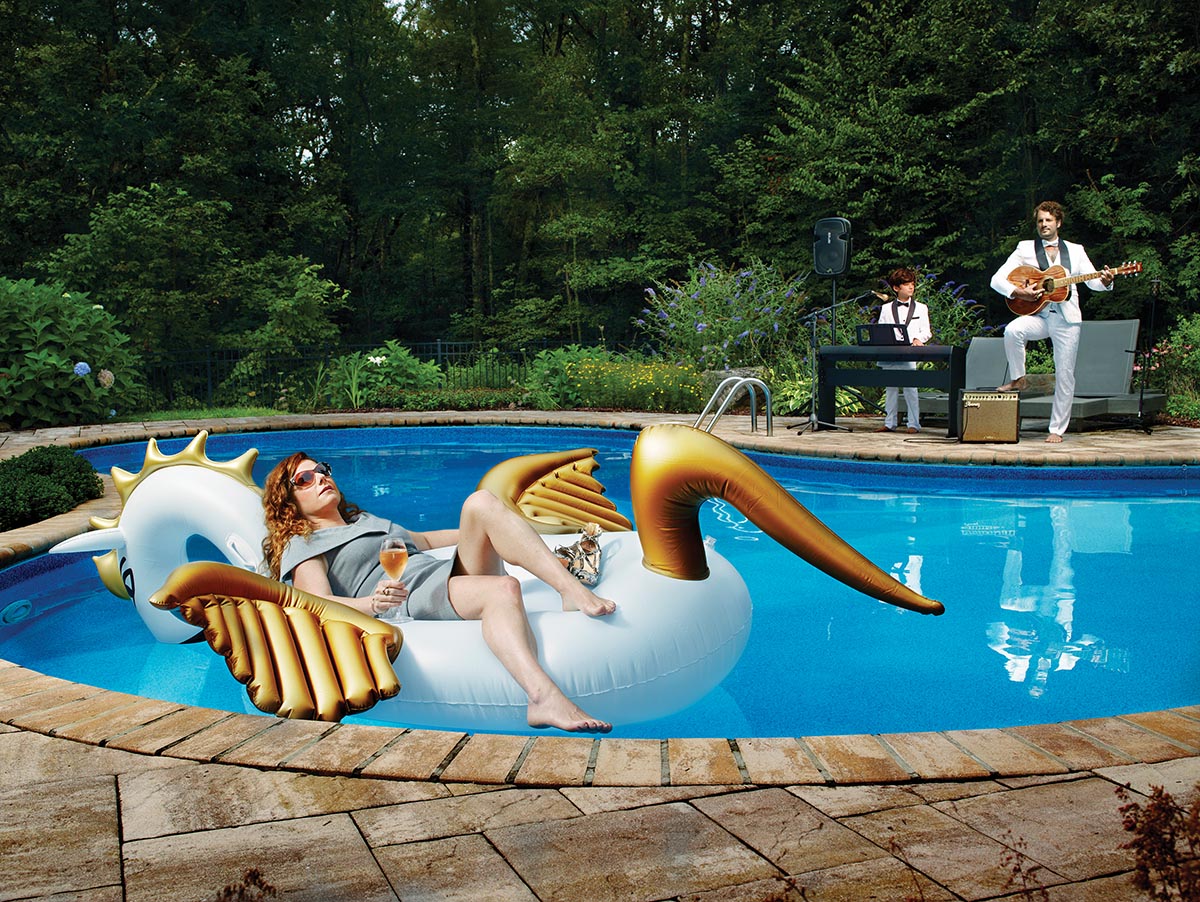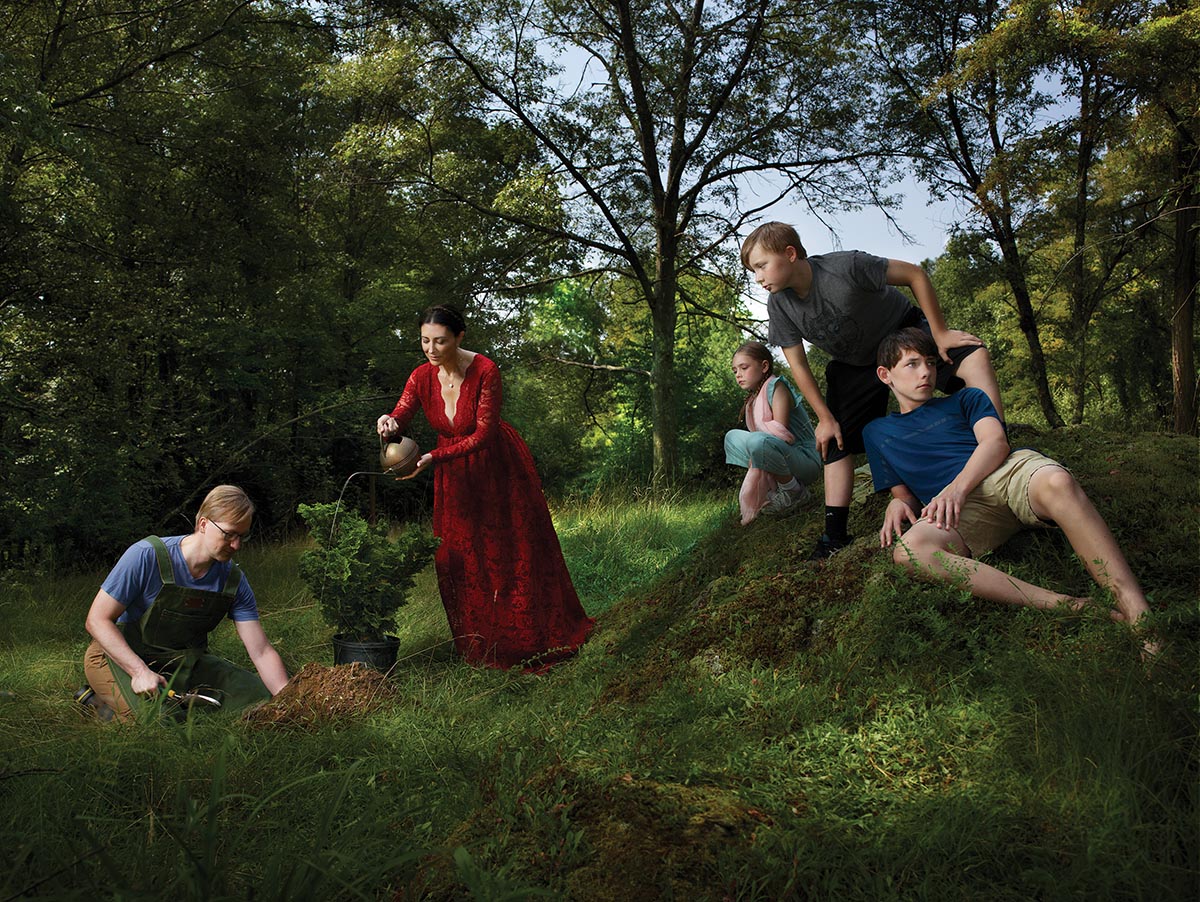Doron Gild laughs as he explains how he ended up in the artsy, semi-rural town of Rhinebeck, New York, tucked into the Hudson Valley just two hours north of New York City. “It’s sure been an interesting, long ride,” says the 45-year-old Israeli-born photographer. His green eyes light up when he adds, “Yep, it’s been a long ride, but in some ways, I think I am just getting started.”
Bitten by the photography bug—courtesy of a Kodak 110 Instant Camera—as a child in Israel, Gild came to New York City at 20 years old with “two suitcases and a load of ambition,” he explains. He landed an assistant position with Manhattan-based portrait photographer Mark Seliger, for whom he worked during his undergrad summers. “Working for and with Mark was invaluable,” remembers Gild. “I learned something from him every time I watched him work.”
Over the next decade, Gild earned a bachelor’s degree in photography and a master’s in fashion photography from New York City’s School of Visual Arts. There, he absorbed everything he could about the craft and business of photography. Among his favorite photographers, all of whom he still admires, were Seliger, Robert Frank, Arnold Newman, Gregory Crewdson, Annie Leibovitz, and Nadav Kander. “I was struck by the way they incorporated narratives, scenarios, and storytelling into their images,” he explains. “Everything they did was based on a strong idea. That attracted and excited me.”
He hoped to emulate his heroes, and he remembers what one of his photography instructors at the School of Visual Arts told him. “He said that you’ll become a photographer when you start making instead of taking pictures,” says Gild. “He said there is no big pile of photographs out there that you can just take from. You need to make your own. That has always stuck with me and that’s what I hoped to do when I started working.”

BRINGING HIS VISION
But that, as Gild would learn, was easier said than done. He signed with an agency, and work came his way. “The commercial photography world is so competitive; I was always hustling,” remembers Gild. He eventually did commercial and editorial work for such prestigious clients as Warner Bros., Bacardi, NPR, New York Magazine, Wired, and The Wall Street Journal, among others. He photographed countless business executives and A-list celebrities including Mikhail Baryshnikov, Susan Sarandon, and Jon Bon Jovi.
While he always hoped to bring his vision—by realizing his ideas—to the commercial work, Gild found that the more assignments he got, the more he saw that wasn’t always possible. “So much of the commercial work I received was based on shooting someone else’s ideas,” he says. “Usually these were ideas that had been formulated over months and months by a creative team and an art director. I got that; that’s the way the industry operates. But over time I grew more and more frustrated. I eventually felt stuck someplace between photography’s commercial and art worlds.”

Then, his aha moment: Around 2017, Gild and a photographer friend, who was also looking to branch out, generated the idea of making a different kind of family portrait. “Instead of a portrait of a smiling family seated in a pretty field, we thought there might be a market for something more creative, more narrative-driven, more idea-based,” he explains.
His friend went her own way, and Gild kept working on the concept. He found a few clients who agreed to collaborate with him on family portraits. They feature extraordinary scenes he’d conceptualize after getting to know a family and their surroundings through hours of interviews and discussions. Each scene was inspired by, and tailored to, each family.

“It felt like I was making a movie about each family’s life,” he explains. Once he’d worked out the scenes he wanted to photograph, he’d bring in a crew, including assistants, a hair and makeup professional, and a wardrobe person if needed. “It was as if I was directing them and producing memorable scenes that were unforgettable moments in their lives. And I was free to be as creative—to run as wild—as I wanted to. I was making, not taking, pictures. And I was loving it!”
He knew he was on to something. He and his wife sold their Brooklyn brownstone and moved with their three children up the Hudson to Rhinebeck, an upscale community with an art-savvy, sophisticated population. “Thanks to COVID and other factors, a lot of my commercial work had dried up, and I knew it was time to make this change,” he says.

Before a session, Doron Gild takes photos of locations at the family's home, then makes rough sketches of where the family members might fit into each picture.

DEEPER THAN A LIKENESS
Gild devoted his energy to selling his concept to local families. After a gallery exhibited some of his portraits, clients began reaching out to him. Among them was Aimee Steele, a noted Broadway vocal coach who lives near Rhinebeck with her husband and children.
“We recently had a family portrait taken by a photographer but weren’t overly excited with it,” says Steele. “While it was professional looking, I just felt it hadn’t captured us. We were all smiling and happy and it certainly looked like us. I know this is hard to explain, but we all felt that while it was us, it also wasn’t us. Something was missing. And when I saw Doron’s exhibit and how creative the scenes—these special, extraordinary moments—he had created for other families were, I realized this was exactly what we were looking for.”
As with all his clients, Gild explained to Steele that he would set up and photograph five scenes in one day so the family would have a wide choice of images to print and display. He then spent a full day getting to know the family, chatting about everything from their heritage (both have Dutch roots) to jobs and hobbies to what their children liked and disliked. “He paid special attention to our children and even asked our son what he was most comfortable wearing,” remembers Steele. “He told Doron, shorts and a T-shirt, and that’s what he wore in some of the photographs.”

As he became acquainted with the Steeles, Gild also explored their home and property, using his iPhone to capture locations that might make good settings for the compositions he would envision. Then he returned to his home studio and began coming up with concepts—the narrative behind each of the five images he would create for the family. He knew he would play off the Steeles’ Dutch heritage, so he made rough sketches of a Rembrandt-inspired composition he envisioned. Because Aimee Steele was a vocal coach, he’d suggest posing her with a piano, perhaps working with her son as he practiced singing.
On his next visit to the home, Gild brought his large-format camera to photograph the locations he wanted. “I use these plates to help me plan out my compositions and my lighting,” says Gild. He returned to his studio, sketched the family members onto the prints, and sent those concepts to the family. “Once I am done with the rough sketches, I’ve got everything planned, from the images’ composition to lighting to clothing and props,” says Gild. “I don’t want to leave anything to chance.”
On the day of the session Gild says he and his crew “invaded” the family’s home and directed them through the scenarios. “Doron really captured our souls,” Steele says. “He worked with us to create images that show precisely who we were in these moments at this time in our lives. They are so much deeper than mere likenesses.”

PRICELESS CAPTURES
While Gild may be too modest to claim he’s developed a new niche in portrait photography, it doesn’t look like he has much competition. That may seem like an enviable position, but it brings its own challenges. Take marketing, for example.
A gallery that shows his work won’t sell a lot of his images. “I know there aren’t many people who want to buy someone else’s family pictures,” says Gild. So, he has an arrangement with galleries that are willing to present his work: “I ask them to treat a presentation of my photographs as more of a showroom than a gallery. And I offer them a commission on any future sales I may make as a result of the show.”
Gild’s portrait work isn’t inexpensive. He charges as much as $17,000 for four or five completed images. “That includes three assistants, a hair and makeup person, and more when needed,” he explains.

“More” could even include an animal handler. For one memorable session Gild planned to use one of his client’s horses in a kitchen shot, but the animal’s trainer nixed the idea. “He said it was too dangerous,” remembers Gild. “We settled for a bunch of beautiful chickens. The clients loved it!”
One of Gild’s recent clients, writer and artist David Lionheart, admits, “It is a big investment in money, time, and effort when you hire Doron. But when he comes to you with all his crew and his creative ideas, it feels like you are part of a movie. It’s like you are actors in a movie that’s depicting your own life. He really captures who you are in that moment. To me, that’s priceless.”
Robert Kiener is a writer in Vermont.


 View Gallery
View Gallery


